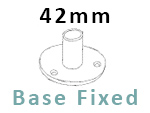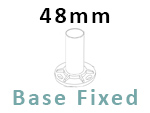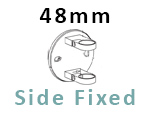Help & Support
-
Service the SWR Way
-
At SWR we are committed to providing high levels of customer service, whilst constantly looking at ways in which we can improve your experience in dealing with us. We have a dedicated team on hand to guide you in your selection of the most suitable balustrade system for your project.
Designing and installing your balustrade system is easier than you may think. Simply send us your sketches, photographs or technical drawings and we will help you turn your vision into a reality.
Our aim is to provide you with a premium quality, safe and reliable system. We will guide and advise you based on the industry standards and building regulations to ensure complete peace of mind in your selection.
-
-
Specification & Quote
-
The SWR team is always on hand to assist you with your requirements.
Whether you have architects' drawings, technical drawings or just a free hand sketch we will be happy to support you when deciding which design would suit your project and what components you need to achieve this.
Our in house experts can use your technical drawings and we support most major file formats. From this we can then produce an accurate quotation for you. This service is completely free with no hassle or obligations.
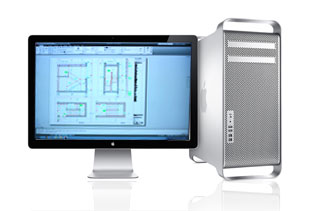
-
-
Material Selection by Application
-
Our balustrade range comprises of AISI 304 and AISI 316 stainless steel, both of which are available in a 320 grit brushed satin finish, and Aluminium products.
AISI 304 and 316 stainless steel appear the same but perform very differently depending on the surrounding environment. This is due to the differences in the chemical composition between the two grades with AISI 316 offering more resistance to corrosion due to the molybdenum content.
In line with industry guidelines, as a general rule we recommend AISI 316 for outdoor use and AISI 304 for interior projects.
The table below can be used as a rough guide to which grade/finish is appropriate for certain environments.
View Material GuideSuitable Applications by Material Grade Rural Urban Industrial Coastal Internal External Internal External Internal External Internal External Satin 304 ✔ ✘ ✔ ✘ ✘ ✘ ✘ ✘ Satin 316 ✔ ✔ ✔ ✔ ✔ ✔ ✔ ✘ Aluminium ✔ ✔ ✔ ✔ ✔ ✔ ✔ ✔
-
-
Quality Assured
-
As an ISO 9001:2008 approved company, quality is at the forefront in all that we do. We have worked to ensure our balustrade systems are designed and manufactured to comply with industry standards and regulations.

-
-
Building Regulations, Load Ratings & Test Certs
-
With any project the importance of safety has to be at the forefront of our minds when considering the most suitable balustrade system. With this mentality we work closely with our clients, providing advice on loading and dimensional specifications in line with The Building Regulations K2 Document. Our systems have been rigorously tested to BS 6180 and have been fully approved for residential and commercial projects.
Type of Area Recommended Load (kN/m2) Modular System Base Fixed 10mm Glass Modular System Side Fixed 10mm Glass Glass Adaptors with 17.5mm Glass Glass Adaptors with 21.5mm Glass Glass Channel with 17.5mm Glass Glass Channel with 21.5mm Glass Domestic/Residential 0.36 ✔ ✔ ✔ ✔ ✔ ✔ Offices and Work Areas 0.74 ✔ ✔ ✘ ✔ ✔ ✔ Areas where people might congregate 1.5 ✔ ✔ ✘ ✘ ✘ ✔ Public Areas with tables or fixed seating 1.5 ✔ ✔ ✘ ✘ ✘ ✔ Areas without obstacles where people moving 0.74 ✔ ✔ ✘ ✔ ✔ ✔ Areas susceptible to overcrowding 1.5 ✔ ✔ ✘ ✘ ✘ ✔ Retail Areas 1.5 ✔ ✔ ✘ ✘ ✘ ✔ Our Glass Channel & Juliet Balconies test reports can be viewed below. Just click on the relevant fixing:
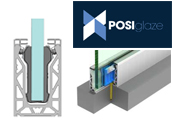 Pure Vista
Pure Vista
POSIglaze
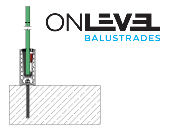 Base Fixed Channel
Base Fixed Channel
TL-6020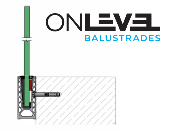 Side Fixed Channel
Side Fixed Channel
TL-6021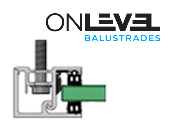 Glass Juliet Balconies
Glass Juliet Balconies
SkyFORCEOur Modular System test reports can be viewed below. Just click on the relevant system diameter:
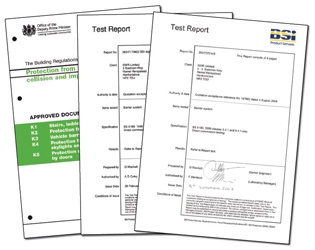
-
-
Glass Requirements
-
SWR’s approach to safety is paramount which equally extends to our choice of glass as an infill solution for your balustrade system. All glass supplied by SWR is manufactured in accordance with BS EN 12600:2002 and our dedicated team will work closely with you to determine the best glass option for you based on the load information you provide.
We recognise that its not just quality the customer needs, but also time. That’s why we have partnered with a few select glaziers across the UK to allow for the best quality glass to be delivered in the best time frame possible.
Whether your requirement is for a domestic glass balustrade for your patio or balcony or fire rated glass for a large commercial development, we can supply toughened or toughened & laminated glass to suit your needs.
Choosing the Right Glass for You
When you contact SWR with your glass enquiry, our experienced and helpful team will determine the right glass for you. We will ask some key questions about your requirement which will enable us to discuss the various options with you:
- Height of the glass you require
- Placement of the glass balustrade (internal or external)
- Is a stainless steel handrail required
- The loading the glass balustrade needs to achieve – this can be provided by a structural engineer or your local building control officer
Once we have established this information, we can discuss what thickness of glass will be required and whether this will be provided as toughened, heat soaked glass or toughened and laminated glass. Toughened glass is ideally suited to most applications where safety is critical, but consideration should be taken if the glass balustrade is at a high level.
Toughened & laminated glass is constructed of two pieces of toughened glass either side of a laminate interlayer and offers the same strength under impact as toughened glass with a crucial safety difference - If the pane is damaged resulting in the glass breaking, the fragments will be retained by the laminate interlayer, enabling the system to still act as a barrier until a replacement can be installed.
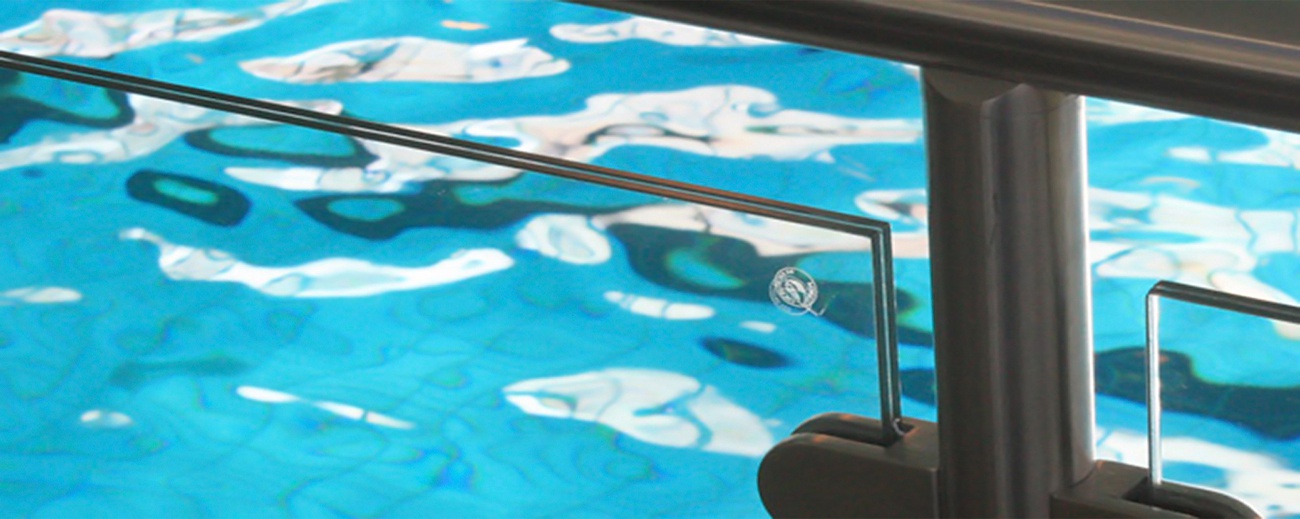
As your glass balustrade will not only need to look great it is also designed to be a key safety feature in your environment. As safety is paramount to SWR, we can call upon the services of an industry recognised Structural Glass Consultancy who, from the information provided to them, can determine precisely what type of glass is required to achieve the strength it is intended for. For your piece of mind, they can provide a written report detailing the calculations used to determine this.
The glass delivered to you will have polished edges and radius corners as standard unless otherwise asked for. We can also supply frosted/sandblasted glass, silkscreen printed glass as well as etched glass and drill holes up to 30mm diameter – ask our friendly team for more information.
Quality Assured Glass Production
As with many products that are available to today's consumer, toughened glass is available from 'KITE MARK' approved suppliers. The product standard that covers this area is BS EN 12150, impact performance requirements for flat safety glass and safety plastics for use in buildings. BS EN 12150 a Kite Marked product standard, which means that a manufacturer of the product may chose to adhere to the regulations and guidelines that are specific to that Kite Mark scheme. The British Standards Institute controls the Kite Mark License scheme, and is responsible for audits and testing regimes. Only when satisfied that a particular product is satisfactory, and that manufacturing controls are in place to ensure continuous compliance, will a Kite Mark License be granted. Kite Mark Licenses are issued for each product type, i.e. a manufacturer may process and supply a wide range of thicknesses of toughened glass, but only have a Kite mark license for one. SWR Supplied glass, all glass thicknesses, tints and finishes are included on the Kite Mark License scope. Continuous assessment and monitoring of production methods and working practices ensure that SWR’s glass partner provide a fully compliant product to our customers in the market place.
-

BS EN 12150 Glass in building - Thermally toughened soda lime silicate safety glass
-

BS EN 14179 Glass in building - Heat soaked thermally toughened soda lime silicate safety glass
-

BS EN 14449 Laminated glass and laminated safety glass
Delivery of glass
Having glaziers situated and able to deliver nationwide, we can deliver nationwide, including British and Scottish isles. We just need to know at point of enquiry where delivery will take place so that we can obtain the correct lead time as well as factor in any additional costs.
Glaziers provide curb side delivery and may assist with moving glass to installation location at their own discretion. We therefore recommend a minimum of two people on site to assist with the delivery.
-
-
What to Expect From Your Glass
-
At SWR, we aim to deliver glass that meets the highest standards of quality and functionality. While we hope your glass remains flawless, we want to provide clarity on what you can expect, including industry-accepted visual characteristics and criteria for determining imperfections. This guide covers double-glazed units made from toughened, laminated, or standard glass, along with any coatings or tints applied to or within the glass.
Understanding Glass Distortions
All glass products exhibit some level of natural distortion and minor imperfections due to the manufacturing process. These minor anomalies are deemed acceptable within industry standards and do not affect the glass’s performance.
At SWR, however, damaged glass is never acceptable. In cases where damaged glass is temporarily installed to maintain your home’s weatherproofing, we commit to replacing it with a flawless unit as soon as possible. Our objective is to provide glass with minimal production-related imperfections while adhering to the following standards for acceptable criteria.Larger Glass Units
For clarity, larger panes of glass (those exceeding 2.5 square metres) are subject to slightly higher thresholds for acceptable imperfections, as their greater surface area naturally increases the likelihood of visible manufacturing effects.
Condensation
Condensation is a natural phenomenon that occurs when the temperature of a surface drops below the dew point, the level at which air becomes fully saturated with moisture. Rather than indicating a fault, condensation is evidence that your insulated glass unit (IGU) is performing its energy-efficient function by preventing heat transfer.
The likelihood of condensation depends on factors like environmental conditions, the presence of overhangs or nearby vegetation, and even subtle temperature or humidity differences between rooms. Exterior condensation on high-performance windows is both normal and expected under certain conditions, such as clear nights with high humidity.
Common Surface Marks
Suction Cup Marks
Suction cup marks are temporary visual effects left behind during manufacturing or installation when suction tools are used to handle the glass. These marks are not defects but rather an indication of the handling process. Over time, exposure to the elements naturally diminishes these marks.
While invisible to the naked eye, the microscopic composition of the glass surface (tiny peaks and valleys) can retain particles from suction cups, which slightly alters how water adheres to the glass. Despite their initial visibility, suction cup marks do not impact the glass’s structural integrity or performance.
Roller Wave
Roller wave is a subtle visual distortion commonly associated with toughened glass. It results from the toughening process, during which the heated glass is cooled while passing over rollers. This can cause a gentle undulating effect on the surface.
Roller wave is not a defect and does not compromise the glass’s strength or durability. It is generally only visible under certain lighting conditions and viewing angles.
Stain Patterns & Brewster’s Fringe
Brewster’s Fringe
Brewster’s Fringe manifests as a rainbow-like pattern visible within a glass unit. This effect is caused by light passing through parallel panes of the same thickness and is completely normal. Pressing the glass may cause the rainbow to shift, highlighting its dynamic nature.
Quench Marks
Sometimes referred to as stain patterns, leopard spots, or anisotropy, these effects are inherent to the toughening process. While they may be visible under polarized light, they are not considered defects and do not affect the glass’s performance.
Acceptability Criteria for Visual Distortions
If visual imperfections are observed, they will be assessed under natural lighting conditions to determine if they meet industry guidelines. Glass is deemed acceptable if the following characteristics are neither intrusive nor concentrated in one area:
•Bubbles or blisters: Air pockets, spherical or irregular, up to 25mm in size.
•Fine scratches: Surface flaws no longer than 25mm with a detectable depression.
•Sleeks: Superficial scratches without a noticeable depression, up to 25mm.
•Scars: White-visible scratches no longer than 25mm.
•Minute particles: Manufacturing debris, up to 1mm in size, trapped within the glass.
•Inclusions: Insoluble materials embedded within or on the glass surface during production.
•Visual effects: Reflections or distortions caused by coatings like Low-E (metal oxide) or by sealed units enhancing reflective qualities.
These criteria ensure that all glass meets both aesthetic and functional standards while adhering to industry norms.
At SWR, we strive to combine exceptional craftsmanship with transparency about the natural characteristics of glass. Should you have any concerns, our team is always here to help clarify and address your questions.
-
-
Cutting, Drilling and Finishing
-
SWR offer a full cutting, drilling and polishing service. Our design technicians provide our engineers with technical drawings of your system, designed to your specifications. Our highly skilled engineers then cut, drill and tap the balustrade accordingly.
During production of your system we take care to polish each tube giving it a smooth clean finish ready for on site assembly.
In line with our ISO 9001:2008 procedures we carry out rigorous checks throughout the production process to ensure ease of use and simple assembly when on site.
For your convenience on site we work to package each part so that all are marked up clearly and can be easily identified when unpacking and preparing to start the job. It’s the small details that make the difference and ultimately help you to safely and efficiently install your balustrade system.

-
-
Installation Instructions
-
Download our Easy-to-follow Instructions for fitting your Balustrade. Alternatively, visit our YouTube channel for video demonstrations.

-
-
Cleaning & Maintenance
-
An important thing to remember with stainless steel is that it is stain ‘less’ and not stain ‘free’. Stainless steel is not completely corrosion proof and does require on-going cleaning and maintenance. As members of the British Stainless Steel Association we advise all of our customers to carry out necessary maintenance on your system to help retain the modern finish of the product.
Click here to download our Easy Balustrade Aftercare Guide
We supply our own cleaning product specifically designed for stainless steel. Our cleaner gives a sparkling appearance leaving a protective film to aid in future maintenance.
Descriptions Size Part Code SWR Easy Clean - Interior Balustrade Cleaner 750ml 0000.90.015 SWR Metal Shine - Exterior Balustrade Cleaner 750ml 0000.90.020 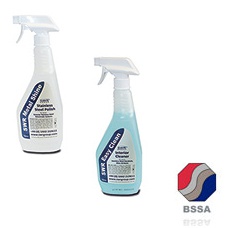
Maintenance Instructions:
Requirement Suggested Method Comments Routine cleaning of light soiling Soap, detergent or dilute (1%) ammonia solution in warm clean water. Apply with a clean sponge, soft cloth or soft-fibre brush then rinse in clean water and dry Satisfactory on most surfaces Fingerprints Detergent and warm water, alternatively, hydrocarbon solvent Proprietary spray-applied polishes available to clean and minimise remarking Oil and grease marks Hydrocarbon solvents (methylated spirit, isopropyl alcohol or acetone) Alkaline formulations are also available with surfactant additions e.g.'D7' Polish Stubborn spots, stains and light discolouration. Water marking. Light rust staining Mild, non-scratching creams and polishes. Apply with soft cloth or soft sponge and rinse off residues with clean water and dry Avoid cleaning pastes with abrasive additions3. Suitable cream cleansers are available with soft calcium carbonate additions, e.g. 'Jif', or with the addition of citric acid, e.g. Shiny Sinks1. Do not use chloride solutions Localised rust stains caused by carbon steel contamination Proprietary gels, or 10% phosphoric acid solution (followed by ammonia and water rinses), or oxalic acid solution (followed by water rinse). Small areas may be treated with a rubbing block comprising fine abrasive in a hard rubber or plastic filler. Carbon steel wool should not be used, nor should pads that have previously been used on carbon steel. A test should be carried out to ensure that the original surface finish is not damaged. Heating or heavy discolouration a) Non-scratching cream or polish e.g. Solvol Auto Chrome Metal Polish
b) Nylon-type pad, e.g. 'Scotchbrite'a) Creams are suitable for most finishes, but only use 'Solvol' on bright polished surfaces. Some slight scratching can be left.
b) Use on brushed and polished finishes along the grain.Badly neglected surfaces with accumulated grime deposits A fine, abrasive paste as used for car body refinishing, e.g. 'T-cut' rinsed clean to remove all paste material and dried May brighten dull finishes. To avoid a patchy appearance, the whole surface may need to be treated. Paint, graffiti Proprietary alkaline or solvent paint strippers, depending upon paint type. Use soft nylon or bristle brush on patterned surfaces. Apply as directed by manufacturer.
Notes:
1. The products referenced in this information sheet are understood to be suitable for stainless steels. However, no endorsement of the products or their manufacturers is implied and it is acknowledged that other manufacturing companies may provide products of equal or better quality. The following companies manufacture proprietary names mentioned: - 'Jif' - Lever Brothers Ltd, 'Shiny Sinks' - Home Products Ltd, 'Ajax' - Colgate Palmolive Ltd, 'D7 Stainless Steel Polish' - Diversey Ltd, 'T-Cut' - Automotive Chemicals Ltd and 'Solvol Auto Chrome Metal Polish' - Hammerite Products Ltd
2. Cleaning agents should be approved for use under the relevant national environmental regulations and, in addition, prepared and used in accordance with the manufacturers or suppliers' health and safety instructions. Solvents should not be used in enclosed areas.
3. Nylon abrasive pads should be adequate for dealing with most deposits. If a more severe treatment is needed to mask coarse scratches or physical damage on a surface, use the finest abrasive medium consistent with covering the damage marks. With directional brushed and polished finishes, align and blend the new "scratch pattern" with the original finish, checking that the resulting finish is aesthetically acceptable. Silicon carbide media may be used, especially for the final stages of finishing. Avoid using hard objects such as knife blades and certain abrasive/souring agents as it is possible to introduce surface scuffs and scratches. Scratching is particularly noticeable on sink drainer areas. These are usually superficial and can be removed with proprietary stainless steel cleaners or, alternatively, with a car paint restorer, such as 'T-cut'.
4. If wire brushes are used, these should be made of a similar or better grade of stainless steel. Ensure that all abrasive media used are free from sources of contamination, especially iron and chlorides.
5. When cleaning a surface with any chemical preparation or abrasive medium, a trial should be done on a small, unobtrusive hidden or non-critical area of the surface, to check that the resulting finish matches with the original.
6. To avoid water marks, use clean rinsing water, such as reasonable quality potable (tap) water. Drying marks may be avoided using an air blower or wiping with clean disposable wipes.
7. Rust marks or staining on stainless steels is unlikely to be the result of corrosion to the stainless steel itself (similar marks may also be found on porcelain and plastic sinks). These marks are likely to result from small particles of carbon steel from wire wool.
-


